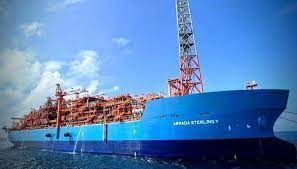New Delhi, Apr 16: State-owned Oil and Natural Gas Corporation’s (ONGC) first deepsea project in the KG basin was hit when a floating oil storage vessel got entangled with fishing nets, prompting the state-owned firm to seek help for the Indian Navy.
Armada Sterling V floating production, storage and offloading (FPSO) vessel, which ONGC will use to produce oil from its KG-DWN-98/2 or KG-D5 block, got entangled with long nets, according to the company’s social media posts.
The company sought help from the Indian Navy whose divers helped remove the nets after a month-long operation. Commissioning operations resumed after that.
“The operations halted as the FPSO Armada Sterling V was stranded due to large fishing nets getting entangled in its fuel-extracting mechanism. Timely action by @IndiannavyMedia / @indiannavy has completely restored operations enabling considerable savings to the exchequer,” ONGC said in a Tweet.
ONGC via LinkedIn expressed its “immense gratitude” to the Indian Navy “for extending timely support in restoring operations at the KG-DWN-98/2 project off Kakinada”.
“Timely action by (the) Indian Navy has completely restored operations enabling considerable savings to the exchequer.”
Divers from the Indian Navy cleared the nets despite extremely challenging underwater conditions – on account of which the salvage efforts took nearly a month.
The Ministry of Petroleum and Natural Gas in a tweet posted a video explaining the operation.
Fishing nets entangled in the FPSO at 440 meters of water depth. “Indian Navy ship ‘Gharial’ and 16 divers from the Command Clearance Diving Team were deployed to remove entangled nets from ONGC’s vessel,” it said.
“Complex underwater fittings and strong currents made the operation a daunting challenge.”
“After a month of challenging dives in tough underwater conditions, the Indian Navy’s skilled team of divers successfully restored the ONGC fuel extraction mechanism on April 8, 2023,” it said.
“Undeterred in the depths of sea, the India Navy’s exceptional skill & determination untangled @ONGC_’s complex fuel extraction equipment, enabling seamless installation of additional underwater fuel lines.”
The FPSO is owned by Shapoorji Pallonji Oil & Gas’ 70:30 joint venture with Malaysia’s Bumi Armada.
Armada Sterling V, which has a processing capacity of about 60,000 barrels per day of liquid and 3 million cubic meters per day of gas, in late December was hooked up to ONGC’s Cluster 2 asset, with commissioning work continuing. The first oil is expected in May.
Last month, ONGC Director (Production) Pankaj Kumar told PTI that ONGC’s delayed Krishna Godavari basin KG-D5 project is likely to start crude oil production in May this year and gas output a year later.
ONGC was originally to start gas production from Cluster-II fields in block KG-DWN-98/2 (KG-D5) in June 2019 and the first oil was to flow in March 2020.
The company blamed contracting and supply chain issues due to the pandemic for shifting the start of oil production first to November 2021, then to the third quarter of 2022 and now to May 2023. The gas output start target was first revised to May 2021, then to May 2023 and now to May 2024.
The block is currently producing 1.7 million standard cubic meters per day of natural gas.
“We will start with 10,000 to 12,000 barrels per day and reach the peak of 45,000 bpd in 2-3 months,” he had said, adding some 2 mmscmd of gas would also flow with oil but the actual gas output will start in May 2024 when 7-8 mmscmd production is expected.
The production estimates are much lower than what was originally projected.
At the time of its launch in April 2018, ONGC had said the estimated capital expenditure would be USD 5.07 billion and operational expenditure would be USD 5.12 billion over a field life of 16 years.
ONGC’s KG-D5 block, which sits next to Reliance Industries’ KG-D6 block in the KG basin, has several discoveries that have been clubbed into clusters. It is situated offshore the Godavari River Delta in the Bay of Bengal. It is located 35 km off the coast of Andhra Pradesh in water depths ranging from 300-3,200 metres.
The discoveries in the block are divided into three clusters — Cluster-1, 2 and 3. Cluster 2 is being put into production first.
Cluster 2 field is divided into two blocks namely 2A and 2B, which as per the original investment decision were expected to produce 23.52 million metric tonnes of oil and 50.70 billion cubic metres (bcm) of gas over the life of the field.
Cluster 2A was estimated to contain reserves of 94.26 million tonnes of crude oil and 21.75 bcm of associated gas, while Cluster 2B is estimated to host 51.98 bcm of gas reserves.
Cluster 2A was anticipated to produce 77,305 barrels of oil per day (bopd) and associated gas at a rate of 3.81 million metric standard cubic metres per day (mmscmd) over 15 years. Cluster 2B is expected to produce free gas of 12.75 mmscmd from eight wells and has a 16-year life.
But now the output estimate is lower – 45,000 bpd of oil and up to 2.5 mmscmd from Cluster 2A and around 9 mmscmd from Cluster 2B. (PTI)
Trending Now
E-Paper


